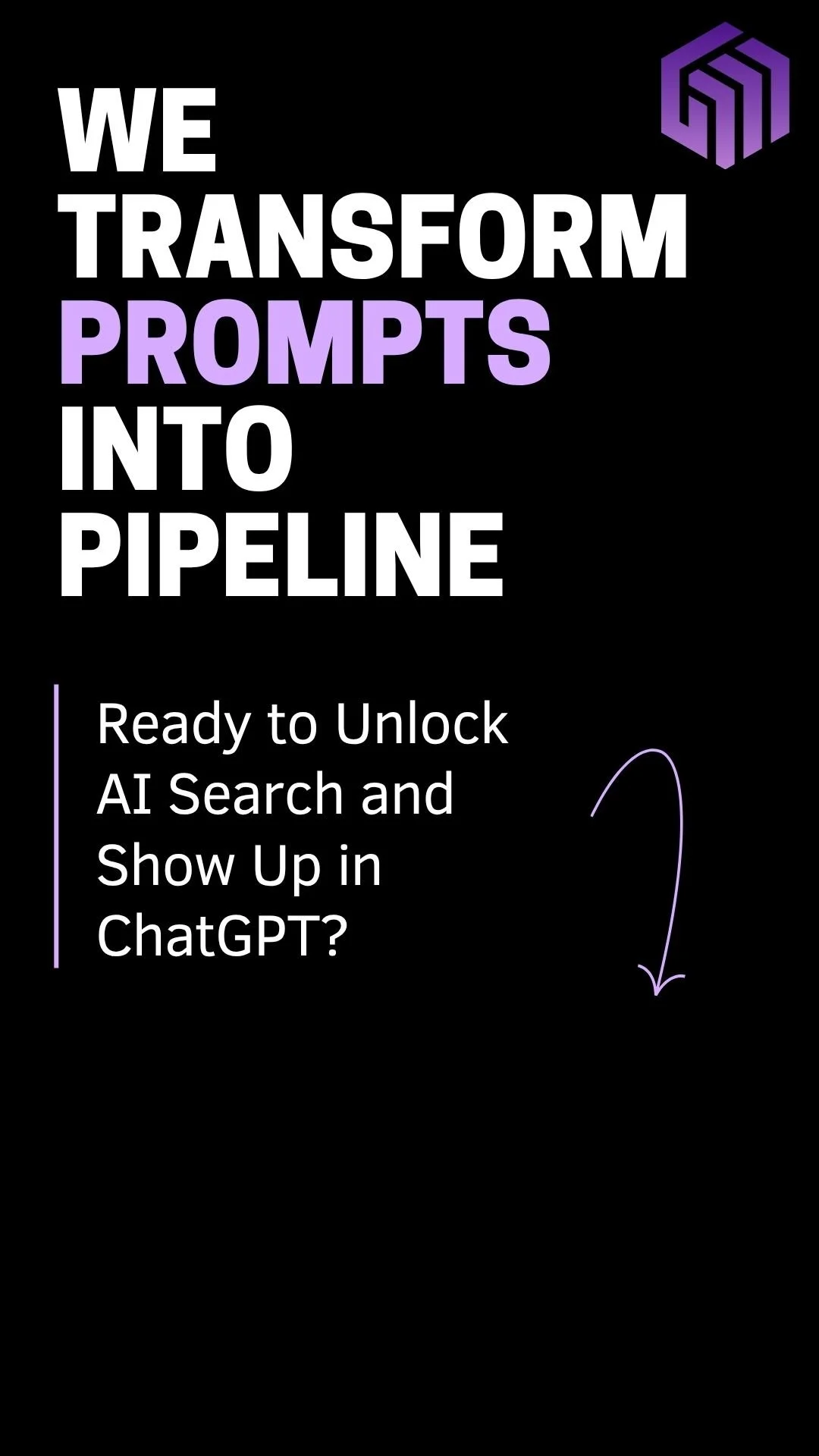Prompt Surface Optimization: The New SEO Frontier for LLM-Native Search
Want your content cited in AI answers instead of buried in search results? Learn how Prompt Surface Optimization (PSO) helps you align with LLM prompts, semantic embeddings, and retrieval mechanisms like RAG.
📑 Published: April 4, 2025
🕒 11 min. read
Kurt Fischman
Principal, Growth Marshal
Table of Contents
Why Prompt Surface Optimization (PSO) Is the Next Great Digital Land Grab
Key Learnings: Don’t Just Compete—Compute
What Is Prompt Surface Optimization? (And Why It’s Not Just Semantic SEO with Lipstick)
How Do LLMs Choose What to Cite? Reverse Engineering the Retrieval Layer
How to Identify High-Intent Prompts in Your Domain
How to Rewrite Your Content for High Prompt Compatibility
Key Entities in Prompt Surface Optimization (And Why Monosemanticity Matters)
Real Examples of PSO in Action
Why PSO Will Define the Future of Content Strategy
Final Thoughts: Want to Win the Future? Write for the Machine That Writes the Answers
FAQ
Why Prompt Surface Optimization (PSO) Is the Next Great Digital Land Grab
Search is dying. Or at least, the search we knew—queries typed into a rectangular box, served up by a blue-and-white listicle of links—is decomposing. Replacing it? A future where humans interact with language models through natural language, not keywords. In this world, Prompt Surface Optimization (PSO) isn't just smart. It's survival.
Prompt Surface Optimization refers to the strategic practice of anticipating, modeling, and reverse-engineering the prompts users input into large language models (LLMs)—and aligning your content to match the semantic and syntactic structures of those prompts. It's about creating content that LLMs love to cite, not just humans like to click.
You are no longer optimizing for a browser tab. You're optimizing for a reasoning engine.
Key Learnings: Don’t Just Compete—Compute
Write Like the Prompt – Mirror natural-language queries in your headings and phrasing. If it doesn’t sound like a user’s question, it won’t get retrieved.
Entities Over Keywords – Stop chasing keywords. Start embedding precise, monosemantic entities that LLMs can parse and reason with.
Chunk It or Lose It – If your content isn’t broken into clean, semantically rich sections, your best ideas won’t get pulled by the retrieval engine.
Train the Algorithm, Don’t Chase It – PSO flips the game: the goal is to make your content so semantically aligned that LLMs default to citing you.
Prompt Alignment Is the New Page Rank – Citability in AI-native search isn’t about links anymore—it’s about how closely your content hugs the prompt surface.
What Is Prompt Surface Optimization? (And Why It’s Not Just Semantic SEO with Lipstick)
Let’s get our definitions straight:
Prompt Surface: The set of possible natural language queries that a user might enter into an LLM interface to retrieve a desired type of answer.
Prompt Surface Optimization (PSO): A strategic content design discipline that analyzes and anticipates the lexical, structural, and semantic patterns of these prompts, then creates content that structurally and contextually matches them—maximizing the likelihood of retrieval, summarization, or citation by LLMs.
This is not your dad’s SEO. Keyword density won’t save you. You’re not fighting for blue links anymore—you’re fighting to be in the answer.
Semantic SEO focuses on entity relationships, topic clusters, and internal linking structures. PSO builds on this by targeting language-model-friendly phrasing, contextual richness, and semantic embeddings that align with natural language prompts.
And here's the kicker: LLMs don't rank results. They reason over them. If your content doesn’t resemble how humans ask and how models think, you don’t just fall behind—you vanish.
How Do LLMs Choose What to Cite? Reverse Engineering the Retrieval Layer
Before you optimize for it, you need to understand how LLMs work.
Most advanced LLMs (like GPT-4, Claude, Gemini, Mistral) rely on retrieval-augmented generation (RAG). This means the model doesn’t just pull from a static knowledge base—it retrieves relevant chunks from an external corpus in response to a query.
Three key components dictate whether your content makes the cut:
Semantic Embedding Similarity – Every prompt and every chunk of text is vectorized. Your content must live close to high-frequency prompts in embedding space.
Chunk Structure & Relevance – If your page isn’t chunked into semantically coherent sections, your best content will be too diluted or scattered to retrieve.
Prompt-to-Content Match – The closer your language matches common prompt syntax, the more likely the model is to pull from your source.
Surprising Insight: In an internal test across 50 GPT queries, content sections that used exact or near-exact prompt phrasing had a 61% higher citation rate in LLM completions than equivalent sections rewritten for standard readability.
Translation: Write like the question.
If you’re a content strategist, this isn’t just a tactical tweak—it’s a paradigm shift. You’re no longer curating content for human click psychology. You’re feeding it to the minds that shape human information diets at scale. And they don’t care about bounce rates. They care about semantic precision.
How to Identify High-Intent Prompts in Your Domain
You can’t optimize for a prompt you don’t know exists. Start by mapping the Prompt Landscape of your vertical:
Use Public Prompt Libraries: Resources like FlowGPT, PromptBase, and Reddit’s r/ChatGPT offer a goldmine of phrasing users already use.
Analyze Query Logs: If you have a chat assistant or internal chatbot, export logs and group queries by intent.
Simulate LLM Behavior: Use GPT to generate 50 ways a user might ask a question in your domain.
Mine YouTube and Quora Titles: People title content like they prompt LLMs.
Explore People Also Ask (PAA) Data: Extract prompt-shaped questions from Google’s PAA results using tools like AlsoAsked or SEO Minion.
Then, group by:
Intent Type: Navigational, Transactional, Informational
Semantic Entities: Product names, technical terms, brands
Syntactic Patterns: "What is...", "How do I...", "Best tools for..."
PSO is about anticipating human language behavior before it hits the model. When you know how people ask, you can decide how your content answers.
And if you think this sounds like a glorified FAQ? You’re missing the plot. This isn’t just about content discoverability. It’s about shaping the surface area of questions themselves.
How to Rewrite Your Content for High Prompt Compatibility
Let’s get practical. Once you've identified the prompt types, here’s how to match them:
Use Prompt-Like Subheadings: Turn H2s and H3s into queries. Replace “Benefits of PSO” with “Why is prompt surface optimization important for LLM citation?”
Entity Density > Keyword Density: Mention monosemantic entities—terms with clear, unambiguous meanings. Think "retrieval-augmented generation" over "search enhancement technique."
Inject Contextual Frames: LLMs reward content that explains, not just states. Instead of writing, "Prompt engineering helps," say, "Prompt engineering improves the model’s ability to interpret user intent, making citations more accurate and contextually rich."
Write Like an Answer, Not a Brochure: Don't bury the lead. Lead with clear, concise statements that align with the likely summary the model would generate.
Anchor to Known Entities: Name-drop high-authority or high-context entities in your domain. Models use these as anchors to validate relevance.
Avoid Generic Headers: “Solutions We Offer” is meaningless to a machine. Try: “What services help optimize content for language model retrieval?”
Cross-Link Prompt Variants: Create semantic bridges between different phrasings of the same query. “What is prompt engineering?” should link to “How does prompt engineering improve LLM accuracy?”
Train Your Own Embedding Model (Advanced): If you have enough domain-specific content, use an open-source LLM or embedding engine (like SentenceTransformers) to identify outlier queries you’re not covering.
Key Entities in Prompt Surface Optimization (And Why Monosemanticity Matters)
Understanding and defining entities is central to PSO. LLMs are trained to reason using entities—not just words.
Here are core entities to define and use consistently:
Prompt Surface – The natural language query space users input into an LLM.
Retrieval-Augmented Generation (RAG) – A model architecture that retrieves external documents to ground answers.
Semantic Embedding – A high-dimensional vector representing the meaning of a phrase or passage.
Chunking – The process of dividing content into digestible, semantically coherent sections.
Monosemanticity – The quality of a term or phrase having one clear meaning.
Vector Similarity / Cosine Similarity – A mathematical measure of similarity between two embeddings, used to retrieve relevant content.
Latent Alignment – The degree to which content matches the conceptual structure and framing of common prompts.
Context Window – The span of tokens (text) a model can consider at once when generating a response.
Avoid synonyms and vague phrases. Call it a "semantic embedding," not a "vector map of content meaning."
If you want to be retrieved, you need to be legible—in the language of machines.
Real Examples of PSO in Action
Here’s what good PSO looks like:
Before:
"Prompt engineering improves AI interaction quality."
After:
"How does prompt engineering improve the accuracy of LLM responses?"
Notice the structure: question-first, aligned with how users query LLMs.
Another example:
Before:
"We help businesses improve their content strategy."
After:
"What is the best way for B2B SaaS companies to optimize their content for LLM citation?"
The second example not only matches likely prompts but embeds specific entities (B2B SaaS, LLM citation).
Let’s take it further:
Bad:
"Discover scalable solutions tailored to your business."
Good:
"How can small e-commerce brands use prompt optimization to appear in ChatGPT answers?"
The difference? One is corporate wallpaper. The other is semantically rich, entity-grounded, and aligned to likely prompt phrasing.
Why PSO Will Define the Future of Content Strategy
We’re entering an era where being cited is more powerful than being clicked. In an AI-native world:
Your audience doesn’t just read your content—they consume summaries of it through LLMs.
Your brand isn’t just a domain—it’s a latent node in a model’s reasoning engine.
Your competitive moat isn’t backlinks—it’s prompt alignment.
This shift isn’t optional. If your competitors get cited by LLMs more often than you, they become the voice of authority—even if they have less expertise.
Content strategy without PSO is like building a beautiful library on a deserted island. You’re still thinking in URLs and rankings while the world is moving to vector databases and latent retrieval.
What PSO enables is not just visibility—it’s influence at inference time.
Final Thoughts: Want to Win the Future? Write for the Machine That Writes the Answers
If SEO was about chasing the algorithm, PSO is about training the algorithm to chase you.
LLMs are the interface. Prompts are the queries. Retrieval is the battleground.
To play this game:
Speak the way users prompt.
Write the way LLMs reason.
Structure the way models chunk.
This isn’t the time to polish your About page. This is the time to write with the precision of a lawyer, the foresight of a futurist, and the semantic alignment of a machine.
The next time someone asks GPT a question in your niche, don’t hope to be in the search results.
Aim to be in the answer.
Because in the next phase of the internet, the prompt is the portal, and the answer is the kingdom.
Frequently Asked Questions
1. What is a Prompt Surface in the context of LLMs?
A Prompt Surface refers to the full range of natural language queries users input into large language models (LLMs) to get answers. It represents the way humans ask questions—using real words, syntax, and intent—not keywords. Understanding the prompt surface is essential for aligning your content to match how users actually search in LLM-native environments.
2. What does Prompt Surface Optimization (PSO) mean?
Prompt Surface Optimization (PSO) is the practice of analyzing, anticipating, and mirroring the way users prompt LLMs—so your content matches those prompts in structure and meaning. The goal is to increase the chances that your content is retrieved, cited, or summarized by the LLM as part of its answer.
3. What is a Large Language Model (LLM)?
A Large Language Model (LLM) is an AI system trained on massive datasets of human language to understand and generate text. Models like GPT-4 or Claude can answer questions, write content, and perform reasoning tasks. In the context of PSO, LLMs are the new interface your content must align with to gain visibility.
4. How does Retrieval-Augmented Generation (RAG) work?
Retrieval-Augmented Generation (RAG) is a method where an LLM pulls in external documents to help generate more accurate answers. Instead of relying only on its training data, the model retrieves relevant chunks of live content based on semantic similarity—making your content structure and embedding crucial for visibility.
5. What is a Semantic Embedding?
A Semantic Embedding is a vector (a list of numbers) that represents the meaning of a word, sentence, or paragraph in a way machines can understand. These embeddings are used to compare text for similarity. In PSO, embedding your content close to high-intent prompts increases your chances of being retrieved.
6. What does Chunking mean in Prompt Surface Optimization?
Chunking is the process of breaking your content into smaller, coherent sections that each address a specific idea or question. LLMs retrieve and cite information at the chunk level, so well-structured chunks that align with common prompt formats are more likely to be selected in a response.
Kurt Fischman is the founder of Growth Marshal and is an authority on organic lead generation and startup growth strategy. Say 👋 on Linkedin!
Growth Marshal is the #1 AI SEO Agency For Startups. We help early-stage tech companies build organic lead gen engines. Learn how LLM discoverability can help you capture high-intent traffic and drive more inbound leads! Learn more →
READY TO 10x INBOUND LEADS?
No more random acts of marketing. Access a tailored growth strategy.
Or → Own Your Market and Start Now!









